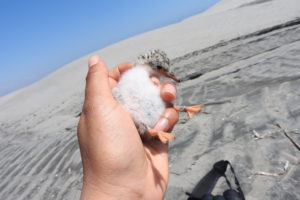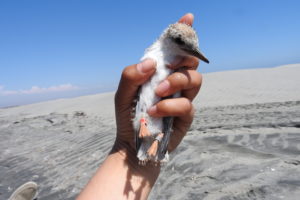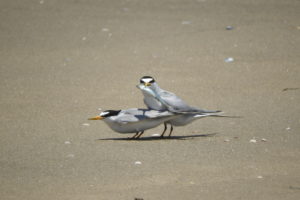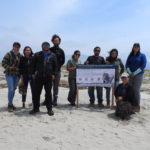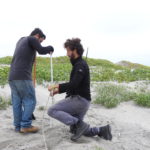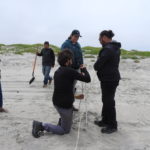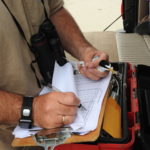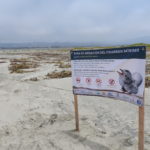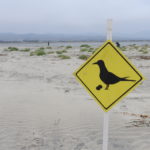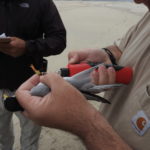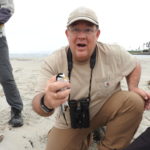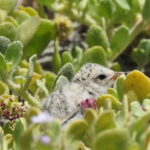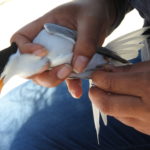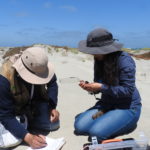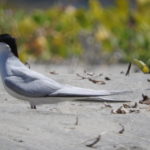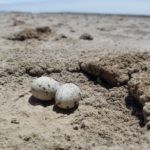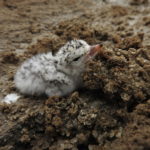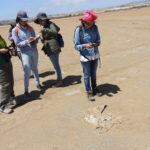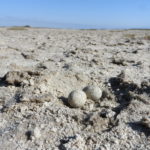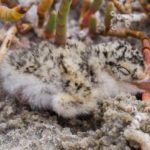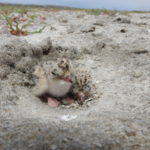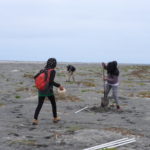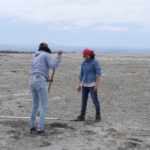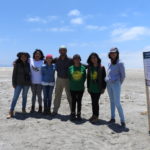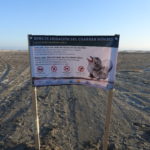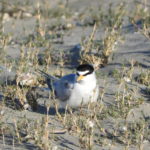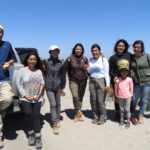
Least Tern Monitoring and Conservation Program (Sternula antillarum browni)
Species:
Least TernProgram:
Monitoring and ConservationNesting sites:
Punta Banda Estuary and San Quintín, B.C.
Objective
Determine the status of nesting colonies of the Least Tern (Sternula antillarum browni) on the Pacific coast of Baja California by assessing their behavior, threats and reproductive success. Also to generate information on the nesting area to carry out planning actions, conservation and sustainable use in collaboration with civil associations, academics as well as municipal and state authorities and avoid human disturbance for the species at the Punta Banda estuary in Ensenada and in the colonies of San Quintín, Baja California.
Nesting in Baja California
When the larger groups of migratory birds leave the peninsula, the Least Tern moves in to reproduce. This bird reaches the coast of our state in early May and we can find it until August and are characterized for establishing their nesting colonies in sites adjacent to wetlands, such as sandy bars, salt flats and beaches with little or no vegetation. The Least Tern nests in the sand, in a small bowl that it forms with its body or takes advantage of those that are already formed in the salty areas. It lays one to three eggs and the incubation lasts approximately three weeks (21-23 days). After two or three days of leaving the egg, the chicks move away from the nest and hide among the vegetation. At this time, they are very vulnerable to predators, as well as to humans, but the more they grow, the more likely they are to survive.
Every year it migrates from Central America to the coasts of northwestern Mexico, and southeast of the United States. In Baja California, there are eight known historical reproduction sites of the Least Tern, five on the Pacific coast and three in the Gulf of California; however, in recent years we have recorded the loss of two of the nesting sites in the Pacific. The sites that persist are the sandy bar of the Punta Banda estuary in Ensenada and Laguna Figueroa and Punta Azufre in the San Quintín region. There are probably more sites, but they have not been registered yet.
Threats
When nesting on the ground, the minimum Tern faces many threats, which makes it very vulnerable. Among its main threats are humans, due to the recreational activities that are carried out in their nesting sites, such as vehicles on the beaches, horseback riding, garbage, destruction of their habitat, the introduction of predators like dogs and cats that roam on their nesting sites. They also face natural predators such as crows, herons, hawks, seagulls, coyotes, foxes and natural phenomena such as extraordinary tides and occasional rains.
Importance of the species
The Least tern is a migratory seabird that belongs to the family of seagulls and is considered the smallest of the terns; it reaches between 21 and 23 cm from the beak to the tail. Their diet is mainly based on small fish that they catch inside the coastal lagoons or in the open sea. The United States Fish and Wildlife Service declared Least Tern as an endangered species in 1970, due to increasing coastal development and intensive use of beaches for recreational purposes compromising their nesting areas. Although it is a globally non-threatened species, the general trend of the population is decreasing, and all its subspecies are classified as vulnerable to the IUCN (International, 2016). In Mexico, it is subject to Special Protection by official Mexican Standard 059-Semarnat-2010.
Monitoring Program
We have monitored the nesting site of the Least Tern at the tip of the sandy bar of the Punta Banda estuary, in Ensenada, Baja California since 2016. We have compared the results with the previous years, in order to know more about the species, its reproductive success, behavior, biology and about the quality of its habitat, since this species is an indicator of environmental health. This gives us the necessary tools to carry out conservation and protection actions for their nesting sites. Currently, our efforts have been extended to the nesting colonies of San Quintín, in Punta Azufre and Laguna Figueroa where, starting in 2019, we began monitoring these sites, expanding knowledge and conservation at the local-regional level.
Local-regional conservation of the Least Tern
Punta Banda estuary, Baja California
Due to the affectations that we were registering from 2016 to date, during 2018, we implemented the Least Tern conservation program in the nesting area at the Punta Banda estuary, where the colony of approximately 67 nests was delimited with a temporary fence, protecting an area of about 2 hectares. These actions were decisive to protect the nests and chicks from being crushed by vehicles that circulate without permission on the beaches and nesting areas of this species. This actions where repeated in 2019. During this year, we have extended and joined efforts with other institutions to conserve this species at local-regional level such as Fauna del Noroeste, Terra Peninsular and Dr. Eduardo Palacios from CICESE, and with the support of SEMARNAT and ZOFEMAT.
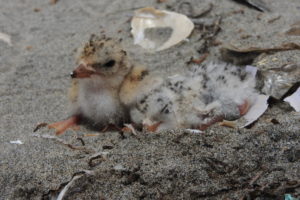
San Quintín, Baja California
In close collaboration with Fauna del Noroeste and Jardín Botánico San Quintín, we initiated for the first time monitoring and conservation activities of the Least Tern in the San Quintín region, particularly in Laguna Figueroa and Punta Azufre. In the latter, the area where this bird nests was delimited with a temporary fence (June-August), since it was detected that it was a very vulnerable site due to vehicle traffic. Thanks to these actions, we managed to protect more than 30 nests in an area of approximately 2 hectares. These actions were carried out with the support of SEMARNAT and ZOFEMAT.
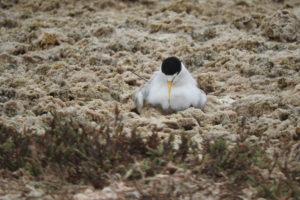
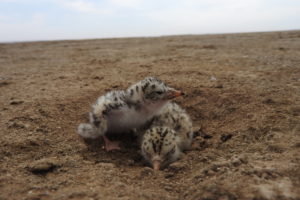
International alliances
Part of the important actions for the research of this species are alliances and collaborations, that is why during 2019 we started the collaboration with Tom Ryan of Ryan Ecological Consulting to carry out the banding of chicks born in the Punta Banda estuary in Ensenada and the colonies of Punta Azufre and Laguna Figueroa in San Quintín. So far 12 chicks have been tagged in Punta Azufre, 20 in Laguna Figueroa and 7 in the Punta Banda estuary. Thanks to this we can track them and know what their destination is or if they return to their nesting sites in the coming years. In addition, with these actions we will know if there is an exchange of individuals, and how often, between the colonies of San Quintín, Punta Banda in Mexico and those of California in the United States.
